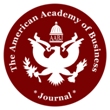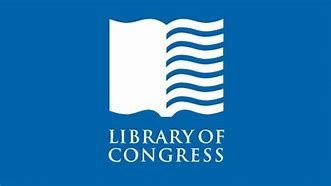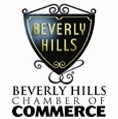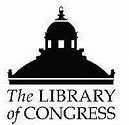|
A Study on Auditors’ Decisions to Investigate
Clients’ Illegal Acts
Dr. C. Janie Chang, San Jose State
University, San Jose, CA
ABSTRACT
This study examines the
effects of the level of environmental violation and the size of the audit fee on
participants’ decisions whether to further investigate a client’s potentially
illegal acts. The results suggest that participants’ behavior is significantly
influenced by both the level of violation and the size of the audit fee.
Moreover, the extent of illegal acts appears to be the dominant factor on
participants’ decisions. The implications of the study to the auditing
profession and regulatory bodies, as well as directions for future studies, are
also discussed.
Google
Scholar Index1 *
Google
Scholar Index2
The
Impact of New Economic Information on Bond Price Forecasting
Dr.
Seddik Meziani, Montclair State University, NJ
ABSTRACT
For bond investors,
knowing what will happen in the economy in the coming quarter or year is a
critical determinant of portfolio selection and reallocation. Forecasting
methods range from informal, almost back-of-the envelope, calculations to
sophisticated macroeconomic models based on equations representing the economy.
Although forecasters vary in their predictions, they all agree that it is
essential to know something about the true structure of the economy, for it is
from this structure that they derive the precise values of the parameters and
coefficients necessary to their forecasts. Market predictions themselves have a
profound impact on the behavior of the bond market.
Google
Scholar Index1 *
Google
Scholar Index2
Tensions Between Accountability and
Accessibility: A Structural Problem in HMOs
Barbara W. McElroy, Berry College, Mount Berry, GA
J.
David Osborne, Berry College, Mount Berry, GA
Dr.
Gary S. Robson, Berry College, Mount Berry, GA
ABSTRACT
This paper analyzes
an unintended consequence of an increased desire for accountability and
efficiency in the operation of medical offices. Models developed by prominent
theorists are used to predict 1) the growing separation of the core medical
function from sick patients, which is designed to regularize and maximize
patient Aproduction@ by doctors, 2) the mechanistic division of administrative
labor to cope with dramatic increases in accounting-driven details, and 3)
diffusion of personal responsibility for patient service in the front office.
Each of these models provide reasons for a pattern of medical care which can
produce an unhappy patient frustrated by what appears to be front office chaos.
Frustration could, unfortunately, lead to less care for those who are unwilling
or unable to overcome the potential social barriers associated with a visit to
the doctor=s office. This is especially true for preventive care, which is
elective in nature. Such a trend challenges the foundations of managed care and
health maintenance organizations (HMOs) which rest, in large part, on the
premise that early treatment of minor problems is both preferable from a medical
perspective and also less expensive than treatment of severe illness. In
considering the future of doctor-patient relationships, unintended social
barriers to access need to be carefully managed to help maximize the
effectiveness of the larger medical care system.
Google
Scholar Index1 *
Google
Scholar Index2
Determining College of Business Department
Efficiencies over time utilizing DEA
Dr.
Martin Feinberg, The University of Texas, Pan American, Edinburg, TX
ABSTRACT
This study determines
efficiencies over time for each of four departments in the College of
Administration and Business of an AACSB accredited university for each year of
an eight-year period. A major contribution this study provides is that it is the
first known study to utilize data envelopment analysis (DEA) in order to
determine efficiencies of academic departments over time. Data envelopment
analysis is utilized in order to compute the relative efficiency of the four
academic departments. The four departments use multiple inputs to produce
multiple outputs. The relative efficiency is calculated using a ratio definition
of efficiency for each year. The weights used for each department in this study
are chosen to maximize the weighted output and weighted input. In addition,
regression analysis is utilized for the purposes of checking the relevancy of
the output and input measures. The comparison involves four departments in the
College of Administration and Business of the AACSB accredited University. These
four departments are: Economics and Finance, Marketing and Management, the
School of Accountancy and Business Analysis and Communication. The three
selected input variables are: Operating Expense, Salaries, and the Percentage of
Faculty Members holding a terminal degree. The salaries of teaching assistants
are included as part of the Salaries. The two selected output variables are:
Student Credit Hours and the Number of Refereed Journal Articles published by
the respective faculty members in the four departments. Student credit hours (SCH's)
during the summer semesters are excluded.
Google
Scholar Index1 *
Google
Scholar Index2
The Irish
Subculture: The Re-Greening Shamrock Market
Dr.
Z. S. Demirdjian, California State University Long Beach, CA
ABSTRACT
In the burgeoning age
of multiculturism, the Irish Americans have not been studied as a subculture
from the consumer behavior standpoint, even though the 1990 census reported 38.7
million Americans of Irish decent. Despite its enormous size, the Irish market
has been a "virgin territory" for the business world, including marketing
researchers and practitioners. Unlike the Protestant Irish, who are considered
to have gone through the melting pot, there is ample evidence that the Irish
Catholics identify themselves as Americans -but still earnestly Irish. Arguably,
the erosive forces of assimilation have not yet erased the enduring emblem of
the shamrock deeply stamped on the hearts of the Irish Americans. Equipping
oneself with fundamental knowledge about the parameters and preferences of such
a large subculture would enable a marketer to cater to its members’ needs and
wants more efficiently, and to communicate with them rather effectively.
Therefore, in this paper two major tasks are tackled: one is to shed some light
on the characteristics of the Irish ethnic group as a subculture, and the other
task is to delineate the preferences of the "re-greening" Shamrock market from a
consumer behavior perspective.
Google
Scholar Index1 *
Google
Scholar Index2
Melding clicks and
bricks: The Echelon case
Dr.
Nabil Alghalith, Truman State University, Kirksville, MO
ABSTRACT
Our world is
interdependent on the interaction of several computer networks that control
devices and on the dream of interoperability of each entity. Echelon Corporation
develops products to maintain interoperability by adding an "intelligence agent"
that communicates with other products. Interoperability is the ability to
integrate several products from different areas into a network system. Echelon
was founded in 1989 with the development of their main technology and product,
LonWorks. LonWorks products can be utilized across business and industry lines;
in fact, around 4 million LonWorks products are used throughout the world today.
Google
Scholar Index1 *
Google
Scholar Index2
Are Bank Regulators
‘Insiders’ Or Outsider?
Dr.
Candy Bianco, Roger William University, Gabelli School of Business, RI
ABSTRACT
Formal enforcement
actions are the only publicly disclosed information by bank regulators regarding
serious bank problems. This is the first study to examine market reaction to
formal enforcement actions since the change in bank regulation in 1991. This
research evaluated the equity market impact of 393 formal enforcement actions
issued by the OTS, OCC, FDIC, and FRB during the period 1991 through 1996. The
empirical results support the hypothesis that bank regulators provide
information to the market through public disclosure of formal enforcement
actions. The market response was strongest for the institutions regulated by the
OTS and to a lesser degree for the institutions regulated by the FDIC. No
significant market reaction was found for OCC and FRB regulated institutions.
Generally, market reaction declined during the sample period and disappeared by
1994.
Google
Scholar Index1 *
Google
Scholar Index2
The Jury System – Is
Justice Truly Blind?
Dr.
Mark Puclik, University of Illinois at Springfield, IL
ABSTRACT
The role of the jury in American Jurisprudence is examined in this paper.
Specifically, the issue of impartiality is examined in light of leading U.S.
Supreme Court cases. These cases
address the topics of pretrial publicity, racial makeup, and the concept of
"peer" representation. The paper examines the effectiveness of the jury in light
of these rulings. By now, most
of us know that the United States Constitution guarantees us a right to a trial
by jury. But do any of us know what this right really entitles us to? Would we
be so insistent on this
"right" if we knew that inherent in the right are severe, life-threatening
flaws? Even the wording of the Sixth Amendment (the Seventh Amendment merely
provides for a jury trial in
cases in which the "controversy" exceeds $20) is questionable: "In all criminal
prosecutions, the accused shall enjoy the right to a speedy and public trial, by
an impartial jury of the
State and district wherein the crime shall have been committed…" (U.S.CONST.
amend: VI.).
Google
Scholar Index1 *
Google
Scholar Index2
The Marketing Implications of European
Unification With Monetary Union
Dr. James P. Beaghan, Central Washington University,
Seattle, WA
ABSTRACT
As global business firms gear up for 2001 and beyond one factor that must be
considered is the effect of the European Community having become a single
market of 380 million relatively affluent consumers. After centuries of
squabbling, and 44 years of trying, the European Economic Community finally
became a single common market on January 1, 1993. The implications for global
businesses from non-European countries is staggering--one border, one set of
product standards, one banking system, one set of tariffs and customs
regulations, and more. The prospect facing U.S. firms is a Europe where the
exportation of products will be as uncomplicated as European imports are to the
U.S. today. The possibilities for cost savings through economies of scale and
reductions of red-tape are making companies all over the world salivate with
anticipation when considering the European market. The basic premise of this
paper therefore, is that the New Europe and the changes that it will bring
about could mean unparalleled marketing opportunities for U.S. firms if they
understand these changes and are prepared to move quickly, not only to offset
the change process that is currently underway in Europe, but also to be in
position to take full advantage of the tremendous opportunities that the New
Europe will present in the future. This paper will focus primarily on new
marketing opportunities and strategies for 2001 and beyond within the larger
context of the unification process in the EC. Therefore, before we begin
analyzing new marketing strategies within the European context, we will first
lay some groundwork by discussing the history of the European Economic
Community and the general nature of the unification process as it continues to
unfold.
Google
Scholar Index1 *
Google
Scholar Index2
A Stochastic Optimal Control Approach To Resource Allocation In Customer
Relationship Management
Kalyan Raman, Ph.D., The
University of Michigan, Flint, MI
Madhukar G. Angur, Ph.D., The University of Michigan,
Flint, MI
ABSTRACT
Customer Relationship Management (CRM) is a combination of information
technology and analytic support systems to integrate sales, marketing, customer
service and customer
contact in order to improve customer relationships. The nature of CRM makes
analytical support absolutely essential because increasingly powerful
information technology has
furnished an enormous volume and specificity of data. But without specialized
analytical tools, all this data is like an encyclopedia with no spaces between
words, no spaces
between sentences, no capitalization, and no punctuation — in short, it is an
enormous amount of unusable information. Analytical models bring order,
structure and a logical
organization to data, thereby improving the effectiveness and optimality of
decision-making.
Google
Scholar Index1 *
Google
Scholar Index2
Some Perspectives and Principles of Knowledge Management: A Case Study
Dr.
Yonca Gurol, Yildiz Technical University, Istanbul, Turkey
Muhtesem Baran, Istanbul University, Avcilar, Istanbul, Turkey
ABSTRACT
Knowledge has become the currency of competitiveness and success with the
increasingly complex problems that global organizations face today. Knowledge as
an asset is beginning
to supplant the traditional factors of production - land, labor, and capital-
and has become the most important new corporate and competitive resource.
Companies need to manage their
knowledge in part because knowledge has become their most important product, and
in part because effectively leveraging their knowledge assets is key to
understanding their
customers’ need and meeting those needs in innovative ways.
Google
Scholar Index1 *
Google
Scholar Index2
Effects of Values and Culture on International Consumer Satisfaction
Dr. Turan Senguder, Nova Southeastern University, Ft. Lauderdale, FL
ABSTRACT
Empirical evidence drawn from Hofstede's international study (1980, 1983) shows
that values differ significantly among nations. This research explores important
differences in the
types of values held by individuals in Turkey and the United States and how
these values influence consumer satisfaction. This research mainly examines
whether the consumers
living in Turkey place more importance on status, social image, personal
abilities, family and interpersonal relationships, than the consumers living in
the United Sates. Hofstede's
(1980) definition of national culture as the "collective mental programming that
conditions peoples' values and perceptions" was adopted in this research.
Google
Scholar Index1 *
Google
Scholar Index2
Future Workforce Trends In Career Development
Dr. Jean Gordon, Barry University, Miami Shores, FL
ABSTRACT
Traditional theories of career development are inadequate due to the complexity
of today’s work world. With dramatic changes occurring nationally and globally,
career and
employment counselors must look at the career development process very
differently. (J.J. Lipstick, 2000). The U.S. population is becoming larger and
more diverse. Over the next fifty
years, the population of the United States is expected to grow by nearly 50
percent, that growth will be influenced by immigration; certain populations will
experience large increases for
example Hispanics and Asians and there will also be an increase of people with
disabilities.
Analyzing Perceptions of Compliance by Mexican Accountants to Mexican GAAP
Dr. Martin Feinberg, University of Texas-Pan American, Edinburg, TX
ABSTRACT
This study will determine the perception of both U.S. accountants and Mexican
accountants in regards to Mexican accountants compliance to Mexico’s Generally
Accepted
Accounting Principles (Mexican GAAP). Accountants in border cities on both sides
of the U.S.-Mexico border were surveyed. This is the first study to empirically
investigate this
important issue. A key objective of this study is to answer many different
questions concerning the perception of Mexican accountants compliance to
Mexico’s Generally Accepted
Accounting Principles. These questions include: How efficient has been the
implementation of Mexico’s GAAP principles? How sufficient is the technology in
Mexico for the
implementation of the Mexican GAAP? Are Mexican universities effectively
teaching the Mexican GAAP? Are Mexican accountants effectively utilizing the
Internet in order to
implement the Mexican GAAP? Do Mexican accountants have satisfactory accounting
information systems?
Google
Scholar Index1 *
Google
Scholar Index2
Electronic Communication: The Challenge to Innovate
Dr. Charles E. Beck, University of Colorado at Colorado Springs, CO
Dr. Gary R. Schornack, University of Colorado at Denver, CO
ABSTRACT
Educators and trainers from all disciplines must take responsibility for
learning how to help students develop their communication skills, rather than
assume that communication
departments will meet the need. The E-Communication Process Model provides a
framework that identifies the main elements of the communication process, then
identifies specific user
needs and corporate needs that relate to each stage of the process. The process
consists of five stages: background, self diagnosis; expectations, determining
what you want to do;
method, determining how to use the medium; implementation, getting the message
out; and feedback, knowing the impact. Since the e-communication future is
already here, educators
and trainers can reinforce and expand communication abilities so users are ready
for the changing market.
Google
Scholar Index1 *
Google
Scholar Index2
Transitioning from Educational MRP to Web-based SCM
Dr. Philip S. Chong, California State University, Long Beach, CA
ABSTRACT
This paper describes the design, development, and implementation of an Internet
version of MRP-DSS, a educational Manufacturing Resource Planning Decision
Support System
(http://mrpdss.wide-link.com/). It will describe the unfolding experience of
MRP-DSS starting from an MSDOS BASIC version in 1984 to a DBASE Clipper version
in 1992, and now to an
Internet version in 2001. It will focus its description on enhancements in
capability and benefit to the student user as a result of rapidly evolving new
system technologies and
platforms. Using the experiences of MRP-DSS users in both business and
educational institutions, this paper will discuss trends in Production and
Operations Management Software,
evolving advantage, versatility and future potential of Internet, and as MRP
evolves into ERP and Supply Chain Management applications. It will describe the
role of an MRP system
for educational use, the modeling and simulation of a company’s operations,
students’ learning via the procedural and investigative processes, and the
broadening of opportunities in
supply chain integration. Sample screen displays of MRP-DSS/NET will be used to
demonstrate its design features, user interfaces and functional capabilities.
Google
Scholar Index1 *
Google
Scholar Index2
Using Rico Against Fraudulent Debt Collectors
Dr. Brad Johnson, Governors State University, University Park,
IL
ABSTRACT
The purpose of this article is to identify the application of the provisions of
the Racketeer Influenced and Corrupt Organizations Act (hereinafter referred to
as RICO) as an alternative
remedial strategy against domestic and international debt collectors/creditors
who engage in fraudulent debt collection practices. The objective of this
article is to stimulate the
adversarial propensity of victims and targets of fraudulent debt collection
practices for the purpose of becoming more creative advocates. This article
attains its purpose and objective
by (1) analyzing the provisions of a RICO cause of action and (2) applying such
provisions to a factual setting, thereby exemplifying RICO’s remedial nature
within a case study
approach. More specifically, the provisional requirements of a RICO violation
under 18 U.S.C. Section 1962(a) are analyzed, wherein it is unlawful --- for any
person --- who has received
any income derived, directly or indirectly --- from a pattern of racketeering
activity or through collection of unlawful debt --- to use or invest --- any
part of such income, or the
proceeds of such income --- in the acquisition of any interest in, or the
establishment or operation of, any enterprise, which is engaged in, or the
activities of which affect, interstate or
foreign commerce.
Google
Scholar Index1 *
Google
Scholar Index2
NAFTA and Its Influence on Businesses in the Greater Rochester, N.Y. Area
Dr. Jeffrey C. Strieter, SUNY College at Brockport,
Brockport, NY
Dr. Jerald L. Weaver, SUNY College at Brockport,
Brockport, NY
ABSTRACT
The 1994 North American Free Trade Agreement (NAFTA), a trade agreement between
Mexico, Canada and the United States, was designed to minimize trade
restrictions and thereby
increase business between the three countries. Since its implementation, NAFTA
has affected foreign trade and employment in the United States. Depending on the
location, the effects
vary from minimal to dramatic. This study examines the influence of NAFTA on
businesses in the greater Rochester, New York area. Rochester has the highest
per capita dollar volume
of exports in the United States, making this an interesting area in which to
examine the effects of NAFTA. This study examines the post-NAFTA changes in
export/import relationships,
pricing of products and services, employment, costs of conducting business and
future implications between businesses in the greater Rochester areas and Mexico
and Canada.
Google
Scholar Index1 *
Google
Scholar Index2
Constitutional and Empirical Issues in State Takeover Law Litigation
Dr.
Donald G. Margotta, Northeastern University, Boston, MA
ABSTRACT
State takeover laws have been very controversial in practice and in the academic
literature. Most research on these laws in the finance literature consists of
event studies which focus
on the short-term effects of a law's passage on stock prices and while that
literature shows mixed results, it suggests that on average stock prices tend to
react negatively to the
passage of these laws. This paper discusses a different facet of the state
takeover law controversy, that dealing with the constitutionality of the laws
and the role that finance theory
and empirical research has played in litigation over the constitutionality of
the laws. Empirical research in this area has been conducted and used in efforts
to affect federal and
state public policy with regard to takeover laws and a key point of this paper
is to show key factors which affect court decisions regarding constitutionality.
Understanding these
factors may help researchers construct research designs which are more likely to
affect public policy in this area.
Google
Scholar Index1 *
Google
Scholar Index2
Determinants Of The Rate Of Return On Commercial Bank Assets In The United
States, 1959-1998
Dr.
Richard J. Cebula, Armstong Atlantic State University, Savannah, GA
ABSTRACT
This exploratory note empirically investigates determinants of the annual
percentage rate of return on commercial bank assets (ROA) over the period
1959-1998. The findings indicate
that the ROA has been an increasing function of the average annual interest rate
yield on three-year U.S. Treasury notes and the Federal Deposit Insurance
Corporation Improvement
Act of 1991 and a decreasing function of inflation, the unemployment rate, and
the increased competition that began in the 1980s.
Google
Scholar Index1 *
Google
Scholar Index2
An analysis of E-Venture Capital and Evolution of Internet to a Market Place for
Raising IPO and Private Placement Capital
Dr.
Ted Azarmi, California State University, Long Beach, CA
ABSTRACT
This paper investigates and articulates pedagogical issues related to the role
of Internet as a market place for raising capital for new ventures. It focuses
on describing a framework
for effectively sharing ideas and knowledge that determine which companies may
raise capital on the Internet. It introduces a number of costs, benefits, and
testable hypothesize
regarding the difference between the financial efficiency and the cost of
capital for financing firms on the Internet and traditionally financed firms
(without raising capital on the
Internet). It also focuses on issues related to volatility of Internet financed
securities.
Google
Scholar Index1 *
Google
Scholar Index2
Does The Federal Deficit Really Matter?
Dr. Richard Murphy, Ft. Lauderdale, FL
ABSTRACT
"Does the Federal Deficit Really Matter is a qualitative approach to Government
spending in the United States. This work is a combination of historical fact
coupled with a common
sense approach to fiscal policy. Managing debt has continually been an on going
challenge for businesses across the globe. Many finance and accounting people
have successfully
managed this process for decades. The question arises "why can’t the federal
government properly apply, tried and true business principles?"
This paper shows current and recent past policy on debt management and poses
several scenarios that may spell economic folly unless addressed. It boggles
ones mind to hear that we
have the best and the brightest making these fiscal policy decisions that affect
all of the citizens economically. While this paper is qualitative in nature and
content, it is timely because
of the country’s current economic downturn.
Google
Scholar Index1 *
Google
Scholar Index2
|
 The American Academy of Business
Journal
The American Academy of Business
Journal



.gif)